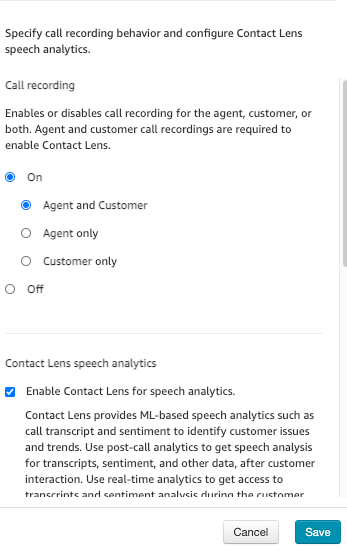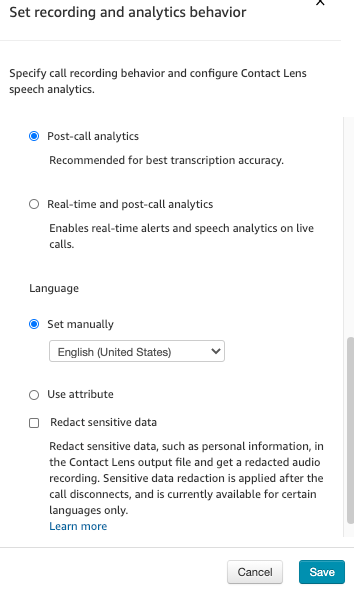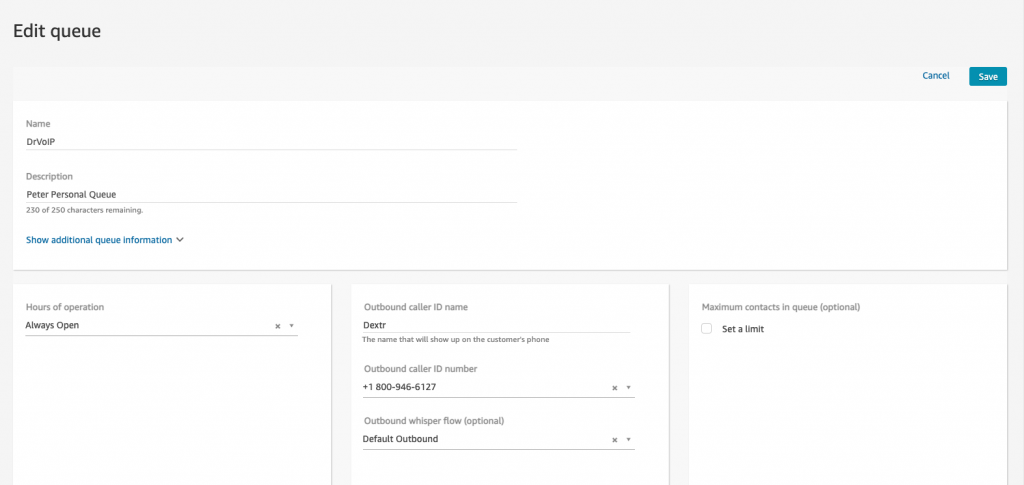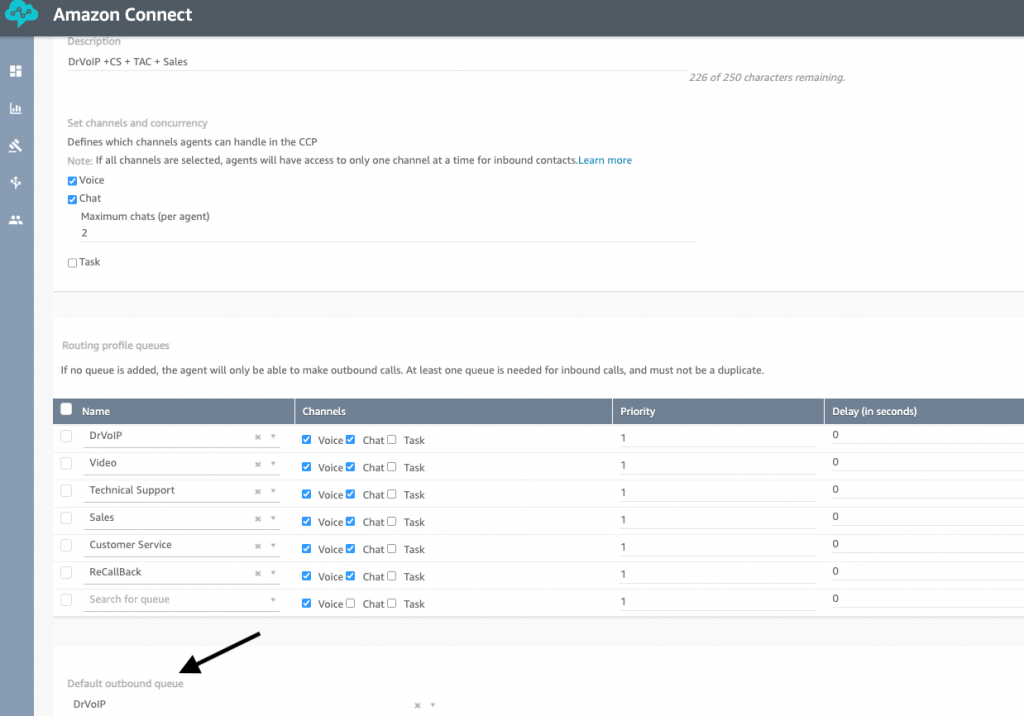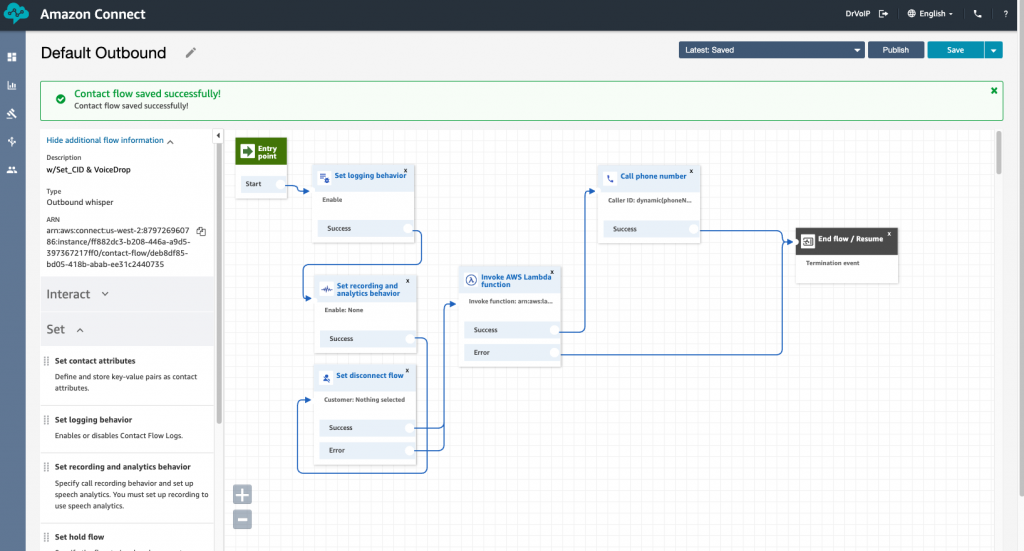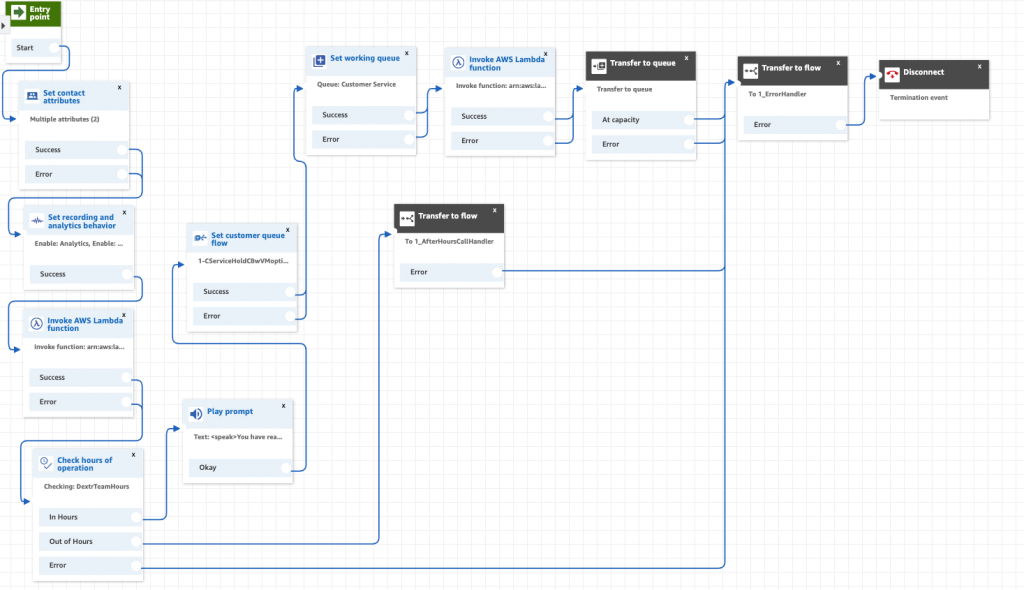Out of the Box?
AWS has configured the contact center to work out of the box. Add a phone number, define at least one agent and using the default contact flows, you can be taking phone calls in minutes. The contact center features will be minimal, but they work without having to have a engineer do everything. A reasonably intelligent business process professional should be able to configure a working contact center. The price you pay for this however, is that you are not able to delete contact flows within the Amazon Connect dashboard.
Why Default Contact Flows?
If you look at the “out of the box” contact flows you will note several contact flows that are Default configurations. These default contact flows are used unless you specify the use of another contact flow of your own creation, For example you will see a “Default Outbound” which is used for every outbound phone call made by the contact center. This contact flow announces to the called party that the call is being recorded before it transfers the call to an agent. If you do not want that behavior you need to replace this Default Outbound contact flow with one of your own creations.
You can not delete it! Why? Basically to keep you from doing something that would crash your call center! The default contact flows enable rapid deployment of a minimal contact center. Folks who do not know what they are doing could easily delete something that the system otherwise makes use of, causing a problem that is a direct result of inexperience and ignorance.
Accumulating Contact Flows
After working with the product for a bit, you realize that you can not just delete a contact flow. You can rename it and reuse it with changes but you can not delete it from within the Amazon Connect dashboard. At some point, these trashed contact flows accumulate and make navigating your configuration more challenging then most of us want to deal with. So what is to be done with these unwanted contact flows?
You Can Delete them?
As you gain more experience with the Contact Center you will learn that using the command line tools, you can in fact, delete a contact flow. ( If you do not know what the Cli interface is, or how to make use of it, you most likely should not be trying to delete contact flows)!
Download and install the AWS Command Line Interface (Cli). This advanced tools can be installed on a Windows, Mac or Linux machine and is used to provide access to advanced configuration options that require some level of software engineering experience. You will configure your Cli with your account, secret access keys, region and optional profiles. Using this tool you can delete a contact flow, for example.
The following format is used through the Cli to delete a contact flow:
aws connect delete-contact-flow –instance-id YOUR-INSTANCE-ID –contact-flow-id YOUR-CONTACTFLOW-ID
The following video clip show you this in action!
Again, don’t fool with the Cli if you are not comfortable as this is a powerful tool and with it comes great responsibility!
(Call us if you need help! – DrVoiP@DrVoiP.com)



